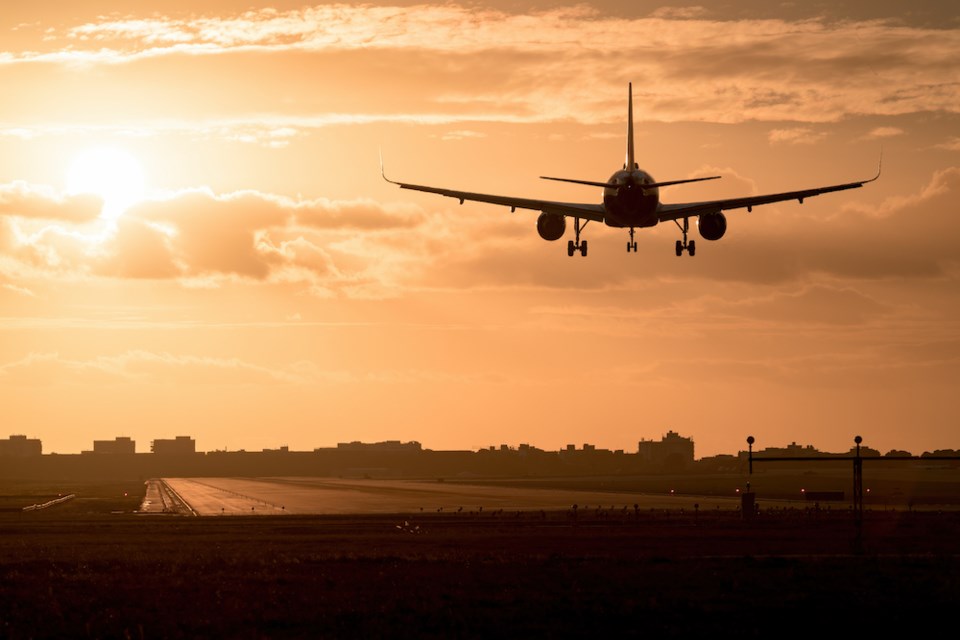When the human sleep cycle gets disrupted, the body starts to fall apart. That much is clear for anyone who has experienced jet lag, but scientists have also come to understand that desynchronizing from the rhymes of the sun is a “hallmark of aging.”
Now, a new study, has proposed an easy way to counteract at least one of those effects — beat jet lag with a big breakfast.
The research, recently published in the journal , looked into how people might respond to disruptions in circadian rhythm — the internal clock that regulates cell function across the brain and every other organ of the human body.
“Mealtime is important for circadian health, especially as we now know almost every single cell in our body has a circadian clock,” said Yitong Huang, a researcher at Northwestern University who led the study.
“These clocks can be affected by different time cues such as light or feeding.”

The researchers' findings come from multiple mathematical models, built using the results of previous animal studies and past research into how mealtime impacts various metabolic syndromes.
“It encapsulates these findings in a mathematical form. Then that enables us to then go and perturb it and say, ‘OK, well if you were to have a really heavy breakfast, what would this model predict might be the outcome?’” said Rosemary Braun, a professor at Northwestern University’s Department of Molecular Biosciences and the study’s senior author.
The group tested how three changes might help: shifting meals to align with daylight hours; distributing meals throughout the day according to the new time zone; and doubling the size of breakfast. All three were found to offer benefits with a six-hour time zone change.
In what the authors describe as a “simple intervention,” eating a larger meal in the early morning for three days was found to decrease the length someone experiences jet lag by up to 44 per cent.
Myriam Juda, a former research associate at Simon Fraser University’s Sleep and Circadian Neuroscience Lab who wasn’t involved in the research, said she wasn't surprised by the results.
“In animals, we have clearly shown it,” said Juda. “It wouldn’t be a crazy to see it in humans.”
Braun said their results don’t reach the bar of a clinical recommendation on how to avoid jet lag. But they do offer a starting point the researcher has already tested on herself on her last winter trip to Europe.
“It was in the dead of winter and I knew that it was going to be hard to get light cues because it was going to be cloudy and the sunrise was late in the day,” she said. “So I did my best to make sure that I had light and calories — I had my bag of raisins right there so that I could, first thing in the morning, get some food in me and my little sunrise alarm clock.”
“Subjectively, I would say it makes a difference. But that of course is not science.”
Aging out of sync with the sun
The human body has more than one internal clock. The brain, the organs, muscles — really every cell in the body — are locked into a pattern that ticks along with time.
But as humans age, the communication between the human brain and the internal clocks in other parts of the body, like the liver, change, according to Huang.
The light of a new day, which resets all those internal clocks, is received though the eyes. But as those eyes age, their sensitivity to light is thought to change, leading to circadian disruptions. Those aging effects make syncing meal and light exposure with the sun especially important to human health as we age, said Huang.
“We're all gonna get older if we're lucky. And so this is a problem that we think is bigger than just travel, right?” questioned Braun. “How do we optimize circadian health?”
The authors say they next plan to investigate that question, and hope to find what makes human internal clocks more resilient. In their study, they suggest things like exercise, drug dosing and light changes might impact wake-sleep cycles as people age.
Huang said the research group plans to take their computer models and bring them into real-world experiments. From there, they hope to fine tune interventions for both jet lag and the phase shifts associated with aging.
“The mathematical model gives us an approach to try to see, you know, if we change this parameter of the model, which account for this part of physiology in your body, what would happen?” said Huang.
“We may be able to translate this work into mobile apps in the future to actually make them into practical use.”
Consequences of a shift to daylight time
As the scientists look to help people better tune their bodies to the sun, those efforts are being complicated by larger political factors.
Across the United States and in provinces like British Columbia, there has been a concerted push to permanently eliminate standard time and move to daylight time (DT).
Advocates say such a move would provide more light in the afternoon, allowing for more light outside of working or school hours. But Braun says decoupling from the rhythms of the sun would almost certainly make a recognized public health burden worse.
In the United States, a one-year failed experiment in permanent daylight time was abandoned in the mid-1970s after reports of — including a spike in deaths among students going to school in the dark.
A 2020 later found the spring transition to DT led to a six per cent increase in the risk of fatal motor vehicle accidents in the U.S. between 1996 and 2017.
In Canada, where the B.C. government has backed a shift to DT in recent years, a group of sleep scientists petitioned the provincial government in a 2021 open letter, stating a shift to permanent DT would leave children to “commute to school in the dark for about a third of the school year.”

鈥婭n 2022, the Canadian Society for Chronobiology released an supporting a shift to year-round standard time. Going the other direction and permanently desynchronizing humans from the rhythms of the sun would sever people from the necessity of resetting their internal clock through consistent light exposure, said the group.
The organization of scientists also cited research showing a permanent shift to DT would likely lead to increased rates of , depression, obesity, diabetes, and cancer. Studies have shown the associated sleep deprivation would negatively impact workplace performance, and disproportionately impact essential workers who often work shifts.
As the population as a whole gets older in places like Canada, the U.S. and Europe, the impacts of desynchronizing with the sun — already linked to neuro degeneration and degraded cardiovascular health — could be made worse, suggested Braun.
“What seems like a small change of just one hour can actually have a really big impact when you look across the entire population,” Braun said. “For somebody who is older, not getting that light cue, may have a bigger impact on them than it would on somebody who who is younger. So it could be a knock-on effect.”
“That is absolutely going to affect all of us.”

